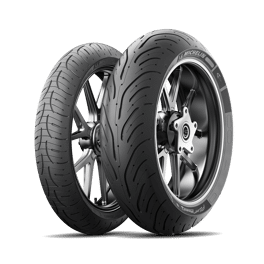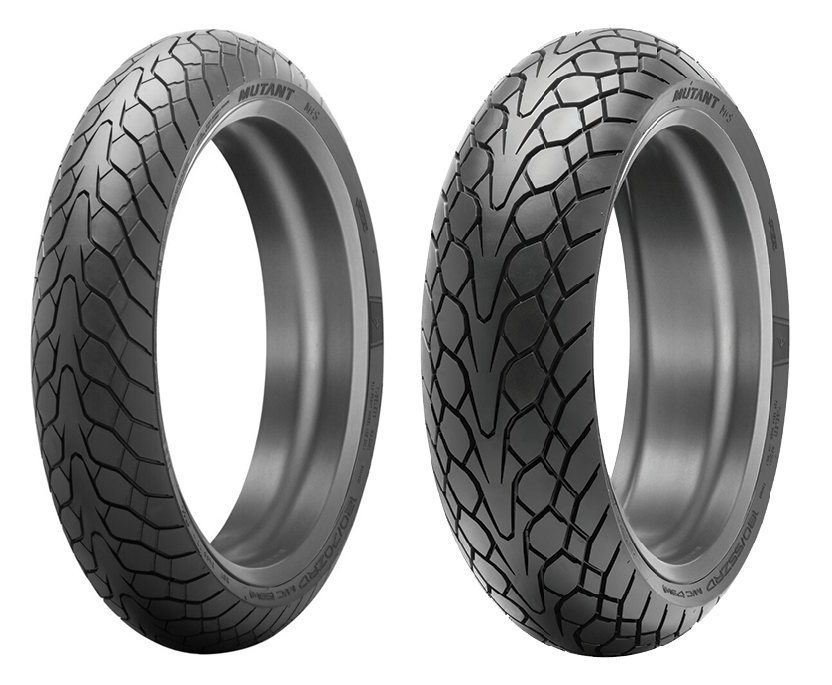Explore the Value of Selecting the Right Tyres With Our Interesting Motorcycle Tire Overview
Picking the appropriate tires is necessary for any type of Motorcycle enthusiast. The right tires improve performance, improve safety, and add to general comfort during adventures. Recognizing the different types, sizes, and maintenance techniques can substantially affect your riding experience. As bikers face varied surfaces and conditions, recognizing exactly how to choose the most effective tires becomes extremely important. What factors should be thought about to guarantee peak efficiency? The responses wait for in the complying with sections.
Recognizing Different Kinds of Motorcycle Tyres
Although selecting the appropriate sort of Motorcycle tire might seem frustrating, recognizing the various alternatives available can considerably boost a biker's experience. Motorcycle tires are mainly classified into 3 types: sport, touring, and off-road. Touring tires are created for long-distance traveling, providing sturdiness and comfort on freeways. These tires include a walk pattern that provides outstanding grip and stability, making them appropriate for numerous weather condition conditions.Sport tyres, on the other hand, prioritize efficiency and handling, including a softer rubber substance that boosts hold during cornering. They are suitable for cyclists who enjoy spirited trips on twisty roads or racetracks. Off-road tyres are tailored for sturdy surface, with a hostile step pattern that provides grip on loosened surface areas like dust or gravel.
Analyzing Your Riding Design and Demands
When evaluating riding style and requires, understanding exactly how different riding problems influence performance is important. This assessment can lead cyclists in picking the proper tyre types that straighten with their details requirements. By thinking about aspects such as terrain and weather condition, cyclists can make enlightened decisions for optimal safety and security and experience.
Riding Problems Impact
As riders navigate various surfaces and weather, comprehending how these variables influence Motorcycle efficiency ends up being crucial. Various riding atmospheres, such as damp, dry, or off-road, need particular tire characteristics to guarantee safety and security and suitable handling. Damp conditions require tires that use better grip to avoid hydroplaning, while off-road riding demands robust tread patterns for grip on loose surface areas. Additionally, temperature variations can influence tire pressure and efficiency, requiring modifications based on the problems faced. Bikers have to analyze their typical paths and settings when picking tyres, as the ideal choice can significantly boost their riding experience, guaranteeing both convenience and security in varied situations. Matching tyres to riding conditions is vital for reliable Motorcycle performance.
Tire Types Summary
Recognizing the different kinds of Motorcycle tires is vital for riders aiming to boost their performance and security. Each tire kind accommodates certain riding designs and problems. Sport tyres, developed for high hold and agility, are suitable for hostile riding and track days. Visiting tires focus on long life and convenience, making them ideal for long-distance trips. Off-road tires include much deeper footsteps for traction on unequal surfaces, attracting experience applicants. Cruiser tires give a smooth ride, frequently highlighting visual appeals for choppers and cruisers. Dual-sport tires mix functions of both off-road and on-road tires, offering functional riders. Assessing private riding styles and requires warranties that the right tire kind is selected, ultimately enhancing overall riding experience and safety and security.
The Impact of Tyre Size on Efficiency
Tyre size significantly influences a motorbike's general performance, influencing security, handling, and traction. The size and width of tyres can especially change a bike's dynamics. Larger size tyres can improve high-speed performance, providing smoother adventures and enhanced security during straight-line traveling. Nonetheless, they might also call for more effort for fast maneuvering. On the other hand, narrower tires tend to provide far better agility and responsiveness, making them perfect for dilemmas and elaborate riding conditions.Additionally, the facet proportion, which connects to the tyre's height, plays an important function in efficiency qualities. A lower account tyre might improve cornering stability however can jeopardize convenience due to lowered cushioning. Eventually, selecting the appropriate tyre dimension lines up with the biker's choices and intended use, whether for sport, touring, or off-road riding. Understanding these nuances assurances peak performance and boosts the overall riding experience.
Walk Patterns and Their Importance
Step patterns on Motorcycle tyres play an important role in figuring out efficiency, affecting aspects such as grasp and handling. Various sorts of step styles deal with numerous weather and terrains, guaranteeing optimal traction and security. Recognizing these patterns is essential for motorcyclists seeking to enhance their Motorcycle's performance and safety and security.
Kinds of Footstep Patterns
The efficiency of a motorcycle is substantially affected by the kind of step pattern on its tyres. Various tread patterns offer particular functions, catering to different riding conditions. Glossy tires include a smooth surface, suitable for completely dry problems and auto racing, giving maximum grip. On the other hand, tyres with deep grooves and complicated patterns are made for damp or off-road conditions, boosting water variation and traction. Some tread layouts, such as dual-purpose tires, strike a balance for both light and on-road off-road use. motorcycle tyre guide. Additionally, sporting activity tyres frequently possess a much more hostile walk pattern, improving cornering stability. Comprehending these sorts of walk patterns helps riders choose the suitable tires for their desired riding experiences and environmental conditions
Effect on Efficiency
Selecting the right tread pattern greatly affects a motorbike's performance in different riding problems. Tread patterns are made to enhance grip, dealing with, and security, directly influencing cornering capability and stopping performance. As an example, a more hostile step style boosts traction on irregular surfaces, making it appropriate for off-road riding. On the other hand, a slicker walk pattern advertises smoother trips on smooth roadways, additional hints lowering rolling resistance and boosting fuel efficiency. The depth see here now and setup of grooves also play a vital role, enabling reliable water displacement and decreasing hydroplaning threats. Ultimately, choosing an ideal walk pattern tailored to certain riding styles and environments warranties enhanced control, security, and overall riding experience, highlighting the value of this choice for Motorcycle lovers.
Weather Condition and Surface Viability
Climate condition and surface kinds substantially affect the suitability of Motorcycle tyre walk patterns. In wet conditions, tyres with much deeper grooves and certain patterns are essential to direct water away and minimize the risk of aquaplaning. Alternatively, a flatter step layout offers ideal surface area call for completely dry roadways, boosting hold and stability. For off-road riding, bumpy tyres supply enhanced traction on loosened surfaces like mud and crushed rock. Each step pattern offers an unique purpose; because of this, choosing the suitable tire is crucial for efficiency and security. Bikers ought to consider their regular riding setting-- whether city, country, or varied terrains-- to assure their tires can properly deal with the conditions, advertising a more secure and much more pleasurable riding experience.
Maintaining Your Motorcycle Tyres for Long Life
While Motorcycle fanatics commonly concentrate on performance and looks, ignoring tyre upkeep can result in premature wear and unsafe riding problems. Frequently examining tyre pressure is essential, as both under-inflation and over-inflation can adversely influence managing and grip. In addition, preserving the correct stress can enhance fuel efficiency and total performance.Routine assessments for signs of damage, such as splits or leaks, likewise play a necessary role in prolonging tyre life. Keeping tires clean from particles and impurities warranties peak traction. Revolving tyres consistently assists distribute put on evenly, extending their lifespan.Proper alignment and balancing of the wheels are required Bonuses for keeping stability and lowering irregular wear. Adhering to the maker's referrals for tire substitute periods assures that riders are outfitted with safe and reputable tires. By prioritizing these maintenance practices, motorcyclists can delight in a safer and longer-lasting riding experience.
Recognizing Tyre Wear and When to Replace
To guarantee perfect security and performance, cyclists need to be cautious in identifying tire wear and understanding when to change their tires. Tire step deepness is an important indication; a deepness of 1.6 mm or much less typically indicates the requirement for replacement. Bikers ought to also examine the tyres for irregular wear patterns, which can recommend positioning or suspension problems. Fractures, bulges, or noticeable cables are severe indications of degeneration and warrant immediate replacement.Monitoring tyre stress is crucial as under-inflation can increase wear and concession safety. Additionally, cyclists need to understand the age of their tires; even if the step shows up adequate, tyres older than 5 years might require changing as a result of rubber deterioration. Regular inspections and upkeep will aid establish that tyres continue to be in peak condition, ultimately boosting both biker safety and security and general Motorcycle performance.

Tips for Choosing the Right Tyres for Your Bike
Choosing the ideal tires for a bike is critical for ensuring suitable efficiency and security, particularly after identifying the signs of wear that necessitate substitute. Initially, riders should consider their riding style and the kinds of conditions they generally come across. Sport tyres offer enhanced grasp for hostile riding, while exploring tires provide durability and convenience for lengthy journeys.Next, it's vital to examine the supplier's requirements for the Motorcycle, as these guidelines guarantee compatibility. Furthermore, examining tire size, tread pattern, and rubber substance can influence performance. Bikers should additionally factor in climate condition; particular tires do better in dry or damp environments.Finally, purchasing from reliable brand names can ensure quality and reliability, while consulting fellow cyclists or specialists can supply useful insights. By meticulously thinking about these elements, bikers can pick tyres that boost their Motorcycle's efficiency, safety, and general riding experience.
Frequently Asked Concerns
Exactly How Do Weather Problems Influence Tyre Performance?
Weather considerably impact tire efficiency, influencing hold, handling, and wear. Rainfall can decrease grip, while severe warmth might create overheating. Cold temperature levels can set rubber, compromising adaptability, thereby impacting total safety and security and ability to move when driving.
Can I Mix Different Tyre Brands on My Motorcycle?
Mixing different tyre brands on a bike can bring about inconsistent handling and performance - motorcycle tyre guide. Experts suggest making use of the very same brand and design for both back and front tires to guarantee optimum safety and stability during adventures
What Is the Typical Life Expectancy of Motorcycle Tyres?

Do Motorcycle Tyres Demand to Be Balanced?
Motorcycle tires do require balancing to assure even weight distribution. Effectively balanced tyres improve security, improve handling, and minimize uneven wear, eventually adding to a safer and much more comfy riding experience for motorcyclists.
How Typically Should I Examine My Tire Pressure?
Routine checks of tire stress are important for security and efficiency. It is advised to examine Motorcycle tire stress a minimum of as soon as a month and eventually trips, making sure ideal handling and fuel effectiveness. These tires include a tread pattern that offers exceptional grasp and security, making them suitable for various weather conditions.Sport tyres, on the other hand, prioritize efficiency and handling, including a softer rubber substance that boosts grip during cornering. On the other hand, narrower tyres have a tendency to supply better agility and responsiveness, making them optimal for limited edges and complex riding conditions.Additionally, the facet proportion, which associates to the tire's elevation, plays a vital function in performance qualities. Adhering to the producer's recommendations for tyre substitute periods ensures that motorcyclists are furnished with reliable and safe tyres. To assure excellent safety and security and performance, bikers should be attentive in identifying tire wear and understanding when to replace their tires. Sporting activity tires offer boosted hold for aggressive riding, while visiting tyres offer resilience and comfort for lengthy journeys.Next, it's important to inspect the producer's specifications for the Motorcycle, as these guidelines guarantee compatibility.
Comments on “Motorcycle Tyre Guide for Choosing Tyres to Your Needs”